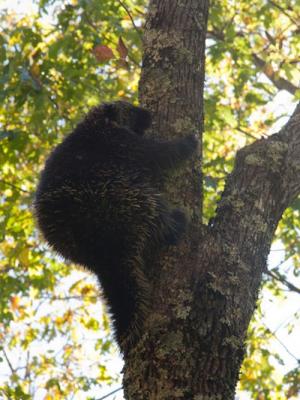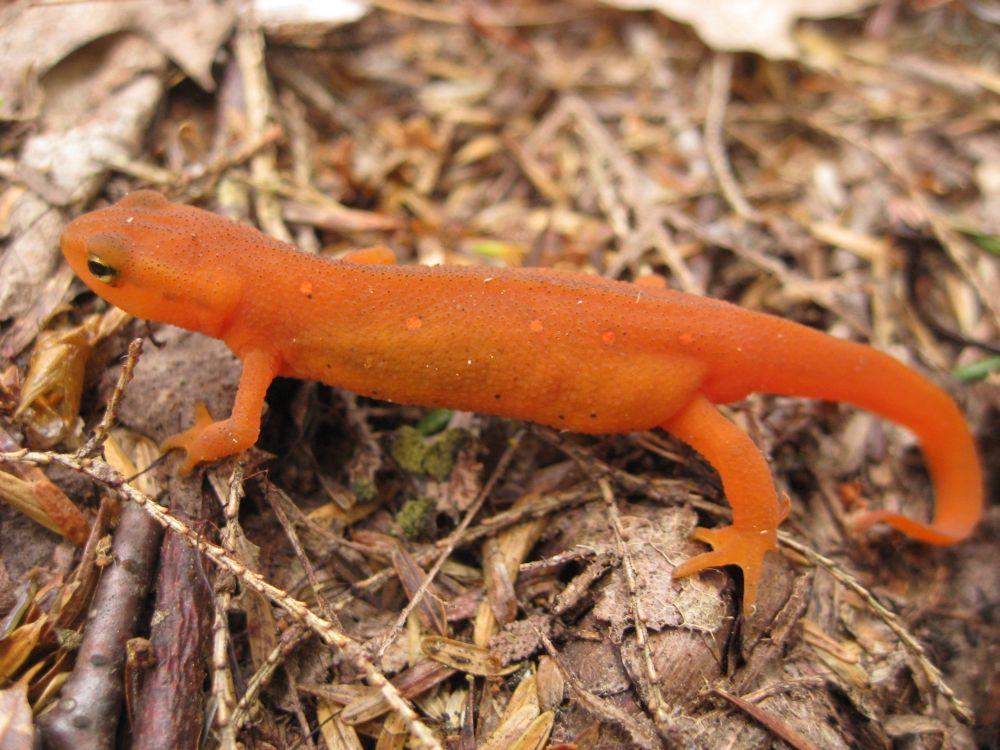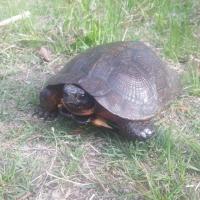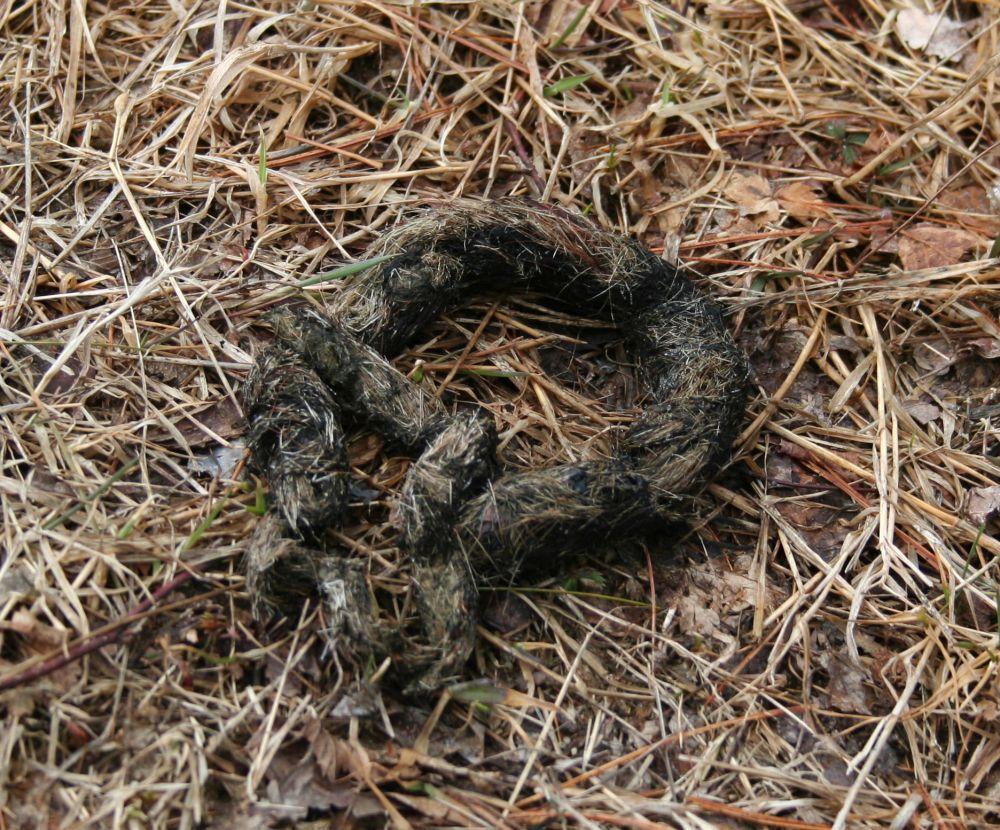To see more wildlife, learn to enjoy the journey as much as your destination
- Tags:
- Wildlife

Moose in autumn on Cockermouth Forest, Groton. Photo Wendy Weisiger
"How come we never seem to see many animals when we’re hiking?”
It’s a familiar lament from those who wish to get more out of precious free time enjoying the peace of the forest and freedom of the hills. I’ve got a few time-tested and simple tips to help maximize your chances to encounter wildlife, find wildlife signs and experience more when you take to the woods.
Quiet down
Your chances of experiencing wildlife go way up if you walk softly and refrain from talking. We tend to rely heavily on sight. Try really listening. Tune in to the sounds of water, birdsongs, woodpeckers drumming or leaves rustling. You’ll likely need to stop hiking entirely to listen well.
Slow down
While you’re at it, sit down. Take a page from the still-hunter’s book and stop moving. Sitting still with eyes closed will heighten your other senses and awareness of sounds and smells around you. When you blend into the forest rather than stand out, birds or mammals moving nearby are less likely to detect your presence, and you’ll become more adept at both seeing and hearing them. Practice your observation skills when watching a backyard bird or chipmunk. Are they aware you are watching?
Get off the beaten path
Since you’re not moving fast and possibly meandering off trail on a random bushwhack, you might as well ditch the whole destination thing entirely. The very best walks in the woods are often open-ended exploration where the journey itself becomes as important as any destination goal. Be safe and tell others where you’ll be hiking and when you expect to return, but remain open to exploring short side-trips. Even hiking a hundred feet off-trail to sit quietly beneath a tree to eat lunch can be a very different experience than dining at a popular summit or along a busy trail.

Leave your dog at home
I rarely see the wildlife my dog scares off with barking when she picks up a scent. Leaving your dog at home better equips you to remain both quiet and motionless. Of course those who hunt game birds will say the reverse is true. Dogs have finely adapted the ability to sense the unseen.
Seek the edges
Pick destinations that are likely to host more overall species. Not all landscapes you visit are equally endowed with key resources wildlife need to survive: food, water, cover and space. Find the edge or the “ecotone” where two distinct areas of different habitat overlap. These areas contain more wildlife species. A stone wall bordering woods and an open field or brushy wetland will contain the denizens of all three habitat types.

Consider forest types
Look at any aerial photo or Google Earth image. Conifer woods of pine, hemlock and spruce will host different suites of species than deciduous forests of maple, beech, birch and oak. For example, red-breasted nuthatches are generally found in and near conifer woods while white-breasted nuthatches are generally found in deciduous woods. Other species are considered “habitat generalists” found at edges of mixed woods and even in suburban backyards. A white-tailed deer or gray squirrel might be found anywhere, while pine martins and spruce grouse require more specialized habitat. And while the open and airy, yet barren understory of pure pine and hemlock offers little in the way of food or cover, people tend to visit these sites because they afford great views into the surrounding woods but are less likely to host foraging wildlife.

Seek water
On the contrary, linear “riparian” corridors of wetlands, stream edges and pond shores feature higher densities of wildlife. A quiet beaver pond offers an excellent opportunity to see a wide suite of wetland species. You may find turtles, frogs, ducks, herons, flycatchers, moose, muskrats, beaver, otters and bats as well as mayflies, caddis flies and dragonflies. Other perhaps less exciting species of insects include biting blackflies, ticks, mosquitoes and deerflies. In order to remain comfortable while sitting motionless, be sure to bring insect repellent or a head net.
Timing is everything.
Speaking of bats and beaver ponds, evening hours and the early morning hours are often the very best times to see wildlife. “Crepuscular” species are those active at both dawn and dusk as opposed to the “diurnal” species active in daytime. The nocturnal species active only at night may be creatures you only hear rustling in leaves, the “things that go bump in the night.” Try sitting at a beaver pond just after sunset. Remember to bring a flashlight so you can find your way back to your car at the trailhead. Weather considerations also play a part in wildlife activity. Few animals are active in mid-summer during the hottest part of the day. When the weather is rainy or windy, most animals seek shelter to conserve energy. You should, too.
Expect the unexpected
Once while standing stock still in May at the base of a large tree along a woods road, I heard the rattle of dry leaves as an animal approached, bounding downhill at high speed. I remained motionless as a fisher ran downwind to my position nearly crossing my feet before detecting me. I’ve had similar good luck in a close encounter with a black bear in my orchard when I was both motionless and positioned downwind so that my scent did not betray my position.
Close encounters of the third kind
Even if you do not see or hear birds or mammals in dramatic fashion in the summer woods, you should be alert for tell-tale signs of wildlife. When you see mud or sand while following aforementioned riparian corridors along brooks and ponds, inspect the ground for tracks. Other signs of wildlife include browse where ragged twigs were nipped by passing deer or neatly clipped by the sharp incisors of rabbits, hare or porcupines.

Scent marking and scat
Wildlife feces, or “scat,” is particularly diagnostic of species. There are even field guides and online resources to help you identify wildlife scat. A common example is coyote scat containing fur and bones of smaller mammal prey or coarse deer hair intentionally deposited along prominent high spots: on top of stone walls, along ridgeline trails and at open ledges. Air currents help broadcast the scent-based chemical messages from canine anal scent glands to declare territorial imperative to interlopers entering occupied territory. Similarly, bears bite and rub on red pine trees, using the aromatic sap of the bite wounds to fix their scent and fur to create a forest equivalent of social media. Beaver scent mounds deposited along dams convey the presence and reproductive status of resident family groups with multiple generations of offspring. Wild animals learn a lot from finding scat. You may learn some too, but for your safety do not handle any wildlife scat.
Encountering wildlife is often a simple matter of good luck – being in the right place at the right time. It helps to slow down and tune in to your surroundings. Ditch the Discovery Channel dramatic wildlife documentary expectations. With busy, fast-paced lives, it’s always good to recalibrate to the slower, quieter pace and the daily and seasonal rhythms of the forests around us.
Have fun. Stay safe, warm and dry.
Enjoy your precious time in the woods.
